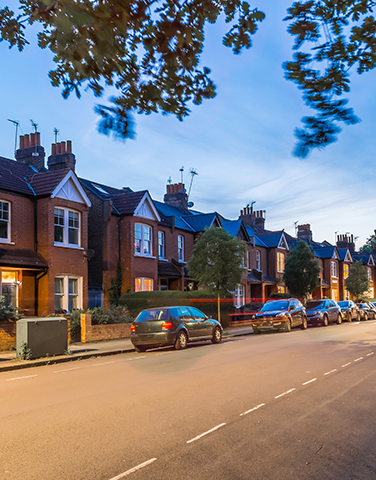
Autumn Budget 2025 – the impact on private individuals
Despite weeks of speculation, Rachel Reeves stopped short of tightening IHT gifting rules or ramping up CGT rates. This will be received as welcome news by many, but the Budget still delivered its fair share of “wealth-focused” tax measures for individuals. Here’s what you need to know.
Business and agricultural relief – transferable allowance
In the October 2024 Budget, the Chancellor announced that a £1 million cap on 100% business relief and agricultural relief would be introduced from 6 April 2026. In the draft legislation this allowance was only available for individuals and could not be transferred between spouses or civil partners, unlike the nil rate band for inheritance tax.
The £1 million allowance will now be transferable between spouses and civil partners. This means that, without having to transfer assets between them during lifetime, couples are able to pass up to £3.3 million of qualifying assets free of inheritance tax:
- The first £1 million for each partner is fully exempt; and
- A further £650,000 for each partner is reduced by 50%, leaving £325,000, which falls within each partner’s nil rate band and is also tax-free.
Whilst this is good news for smaller farms and family-run businesses, the change to these reliefs will still likely affect many business and farm owners, whose heirs will still need to find liquidity to settle an IHT liability whilst ensuring the smooth succession of the business.
The change does not come into effect until 6 April 2026, giving business and farm owners time to review their affairs and take advantage of opportunities to maximise the IHT relief under current rules.
If you have not yet considered succession planning in respect of your business, now is the time to do so. For more detail on this and to get in touch with our lawyers, click here.
The High Value Council Tax Surcharge (HVCTS) – A ‘Mansion Tax’
A mansion tax has been rumoured for some time, and the Chancellor confirmed that this will become a reality from April 2028. Residential properties worth more than £2m in 2026 will be subject to the additional charge. There will be a targeted valuation exercise carried out by the Valuation Agency, with revaluations conducted every five years.
The HVCTS will be collected as an addition to existing council tax charges, and will be levied on property owners rather than occupiers. The thresholds and rates will be as follows:
| Threshold (£) | Annual rate (£) |
| £2m-£2.5m | £2,500 |
| £2.5m-£3.5m | £3,500 |
| £3.5m-£5m | £5,000 |
| £5m+ | £7,500 |
The new HVCTS is unlikely to change tax planning models, but it is likely to have an impact on the property market for properties worth over £2m. It may particularly affect market behaviour for properties which are valued on or around the thresholds. We await further detail, as well as the conclusion of a government consultation which will start next year and look at potential reliefs, exemptions and the taxation of properties owned through companies, trusts or partnerships.
2% income tax increase for property, savings and dividend income
Although the Government is not increasing the rate of income tax on employment earnings, the tax rates are increasing for property, savings and dividend income by two percentage points (except for the additional rate for dividends) over the next few years. The rates will rise as follows:
Dividend Income
| Current rate | Rate from April 2026 | |
| Ordinary rate | 8.75% | 10.75% |
| Upper rate | 33.75% | 35.75% |
| Additional rate | 39.35% | 39.35% |
All taxpayers will still benefit from a £500, 0% dividend allowance.
Savings Income
| Current rate | Rate from April 2027 | |
| Basic rate | 20% | 22% |
| Higher rate | 40% | 42% |
| Additional rate | 45% | 47% |
The existing 0% allowances for basic and higher rate taxpayers will still apply.
Property Income
| Current rate | Rate from April 2027 | |
| Basic rate | 20% | 22% |
| Higher rate | 40% | 42% |
| Additional rate | 45% | 47% |
The Budget sees the creation of a separate tax rate for property income from April 2027 meaning this income will now need to be accounted for separately, while the changes to the rates for dividend income will take effect from April 2026 and for savings income from April 2027.
While it is not clear yet how these changes will apply to trust rates of income tax, it seems unlikely that trusts will be immune from these rate increases.
Cap on pension salary sacrifices
From 2029, pension salary sacrifice will be capped so that only the first £2,000 of annual contributions can be made free of National Insurance Contributions (NICs).
Any salary sacrificed above this amount will attract both employer and employee NICs in the normal way.
Most basic-rate taxpayers currently sacrifice less than £2,000, so they will see no change.
Cap on cash ISA allowances
From 6 April 2027, the cash ISA allowance will be capped at £12,000 within the existing £20,000 overall ISA limit.
Savers aged 65 and above can still place up to £20,000 into a cash ISA each year. Financial firms will also introduce more accessible tools to help investors choose suitable UK investments.
Further information
If you’d like to talk to us about business and agricultural relief and how this may affect your estate planning, please do get in touch.
Talk to us about
Related services








 Download PDF
Download PDF









